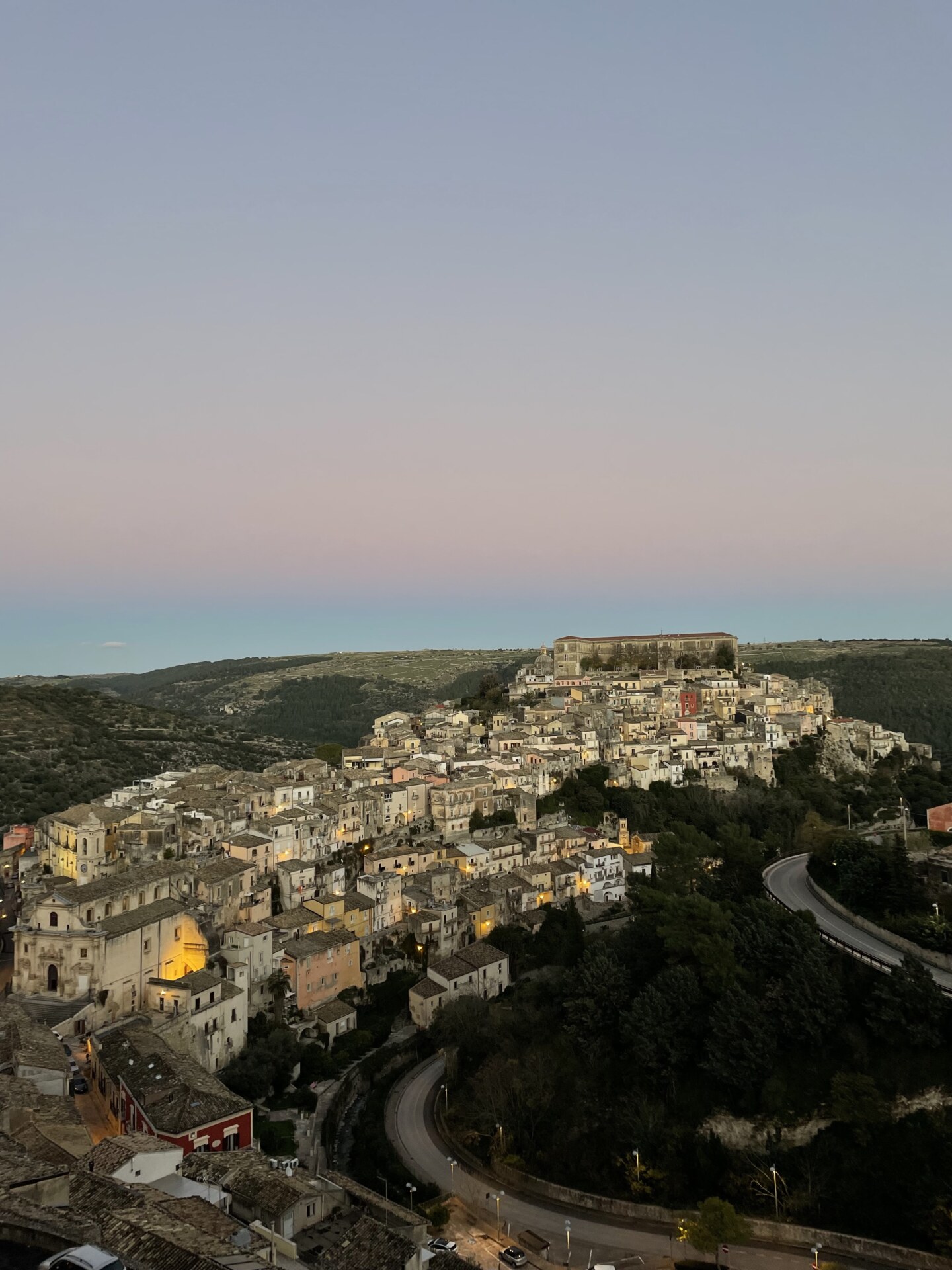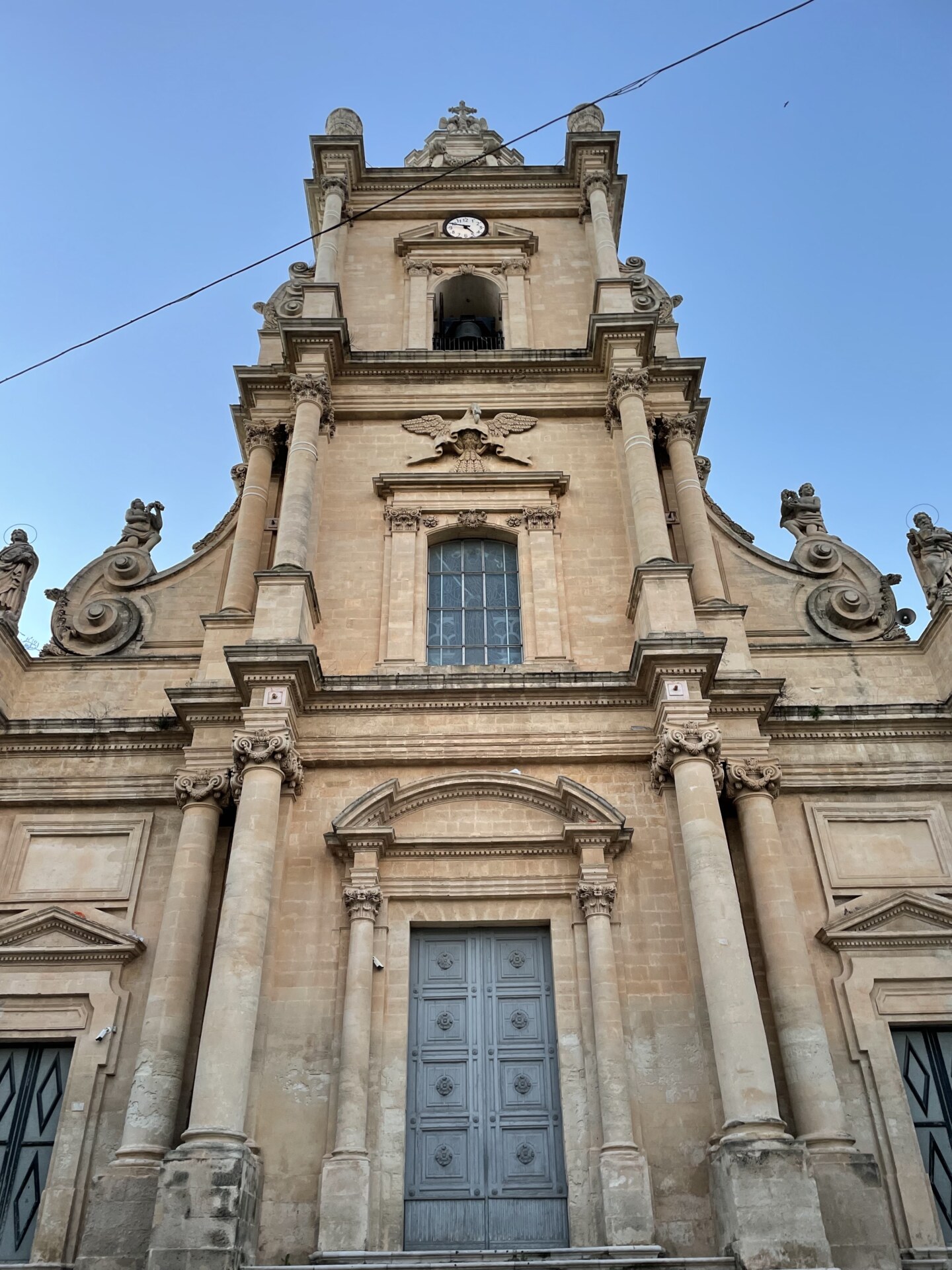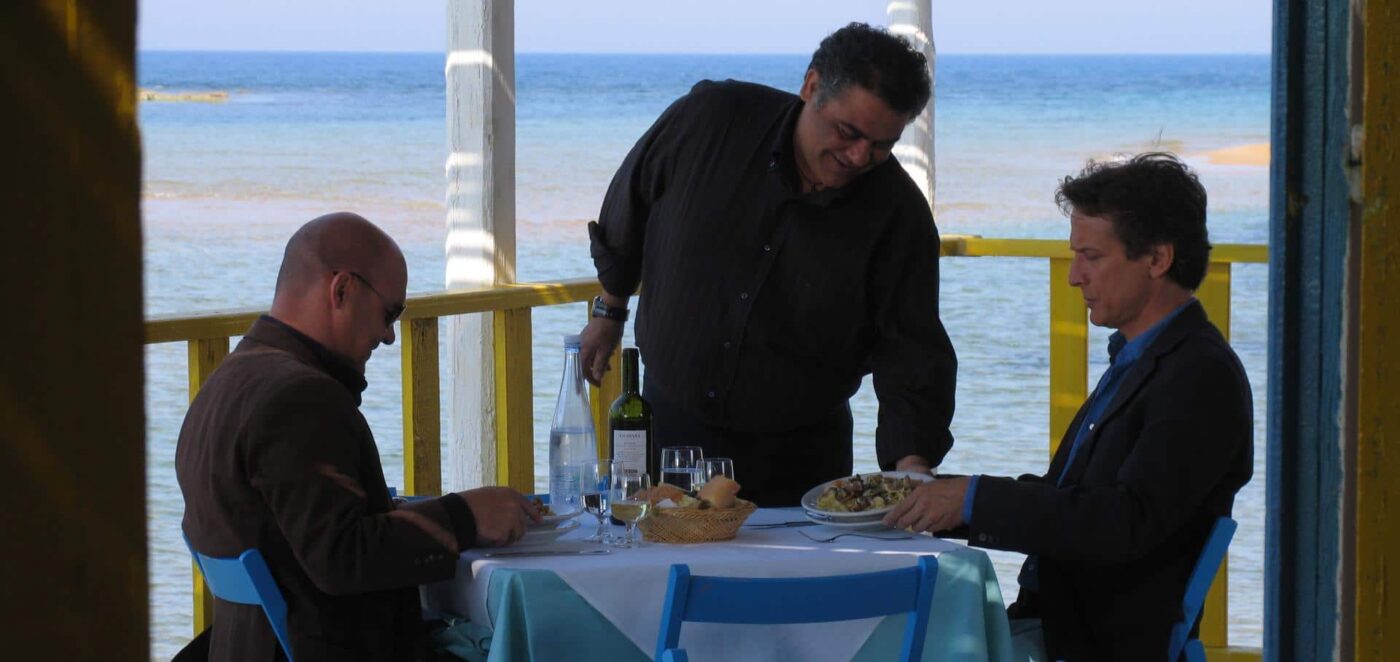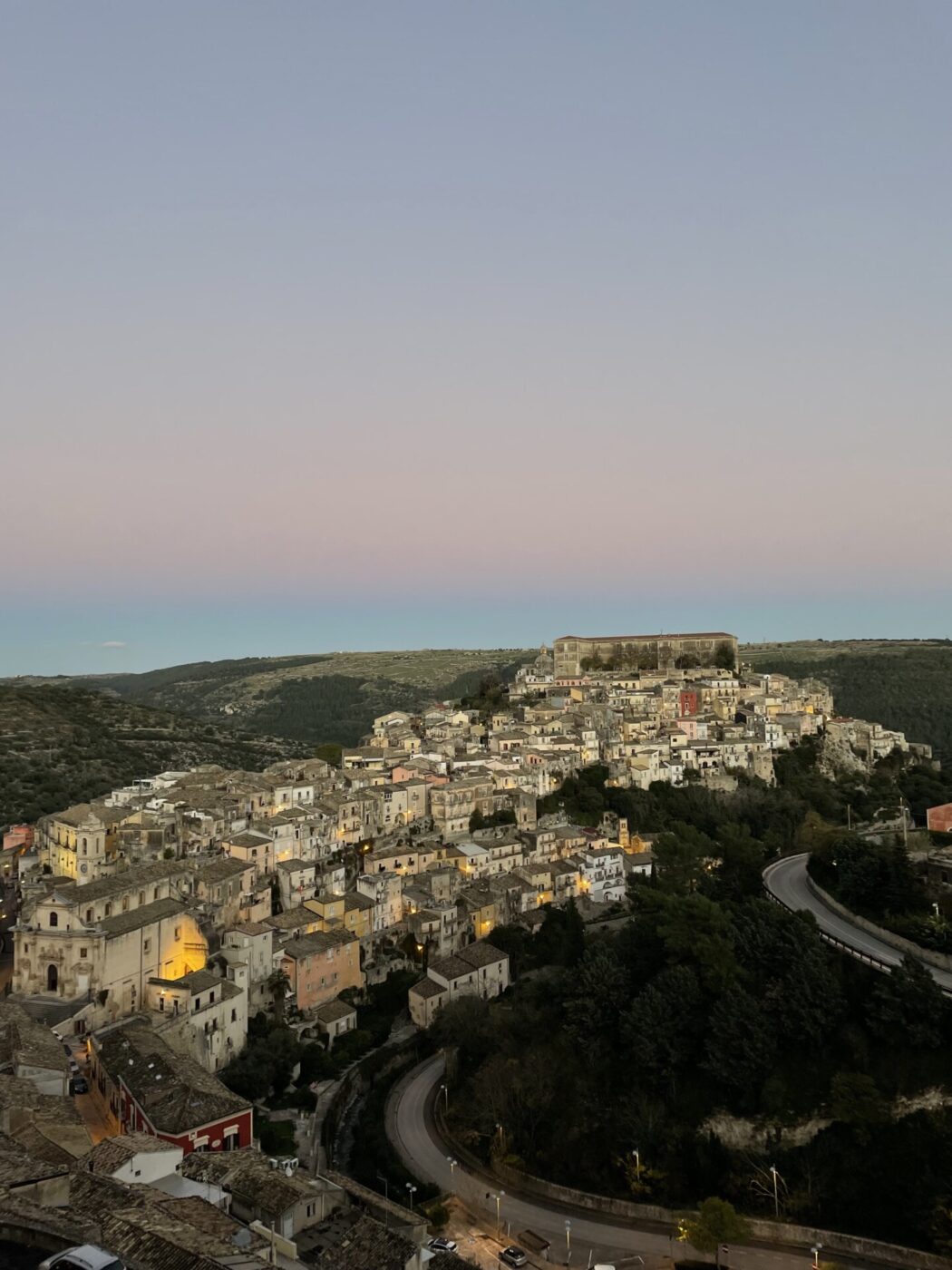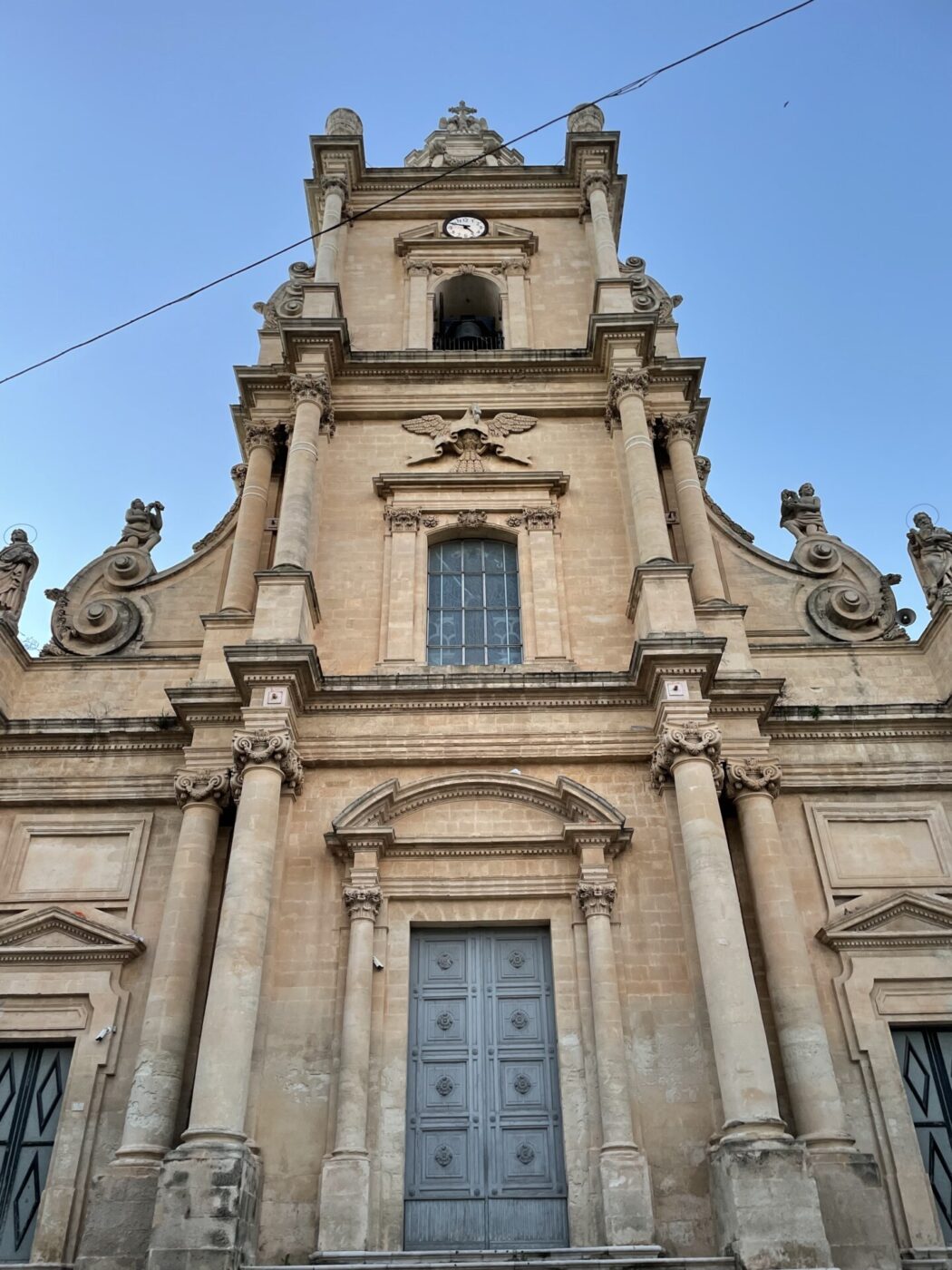“Hello, I’m Montalbano!”
Almost every Monday at 9:15 PM, I would hear these words blaring from the TV in the living room. This is how the episodes of Italy’s most beloved Sicilian police commissioner always begin, alongside a nice close-up of Luca Zingaretti answering the phone, perhaps while sipping coffee on the terrace of his small villa in his fictional hometown of Vigata. Or perhaps his towel hangs around his neck because he’s just taken an early morning swim, or he’s about to stick his fork into his beloved Adelina’s pasta ‘ncasciata flan.
Those weeks that the show aired, without fail, my father would stand in front of the TV, turning the volume up to at least 20-25 (to overcome the background chatter of me, my mother, and my sister) and immerse himself in the world of Il commissario Montalbano (Inspector Montalbano). My father would taste pasta in the trattoria with him, feel the waves of the sea while watching Montalbano swim. My father would cough, embarrassedly, during risqué scenes. He would follow the commissioners every move, pondering alongside him the evidence and clues of the investigation. During commercials, he would deconstruct the last scene in a fervor of excitement and try to reconstruct the plot: “In my opinion, he did it!”
Based on the Inspector Montalbano book series, written by Italian author Andrea Camilleri, Il commissario Montalbano ran for 15 seasons and a total of 37 episodes. One of Italy’s most successful media exports, the series consistently topped TV ratings, hitting a record-breaking 11.3 million viewers for an episode in 2017 and one billion viewers over its 18-year run from 1999 to 2021. (The show had a budget to match: near the end of its run, each episode cost approximately 3 million euros, about as much as a cinema movie, with five prime commercial spots scheduled into each.) Camilleri wrote 30 novels with Sellerio Editore, selling around 15 million copies, the last of which, Riccardino, was published posthumously.

I think Montalbano for my father–like for so many that grew up watching this show–is like a friend, someone whose every quirk, both personally and professionally, he knows. My father knows that Salvo Montalbano’s eye for detail is second to none. He knows that Montalbano is a man of institutions, a man of principles with a deep commitment to Sicily–so much so that he has for decades maintained a long-distance relationship with his girlfriend, Livia Burlando. He never contemplates moving to Boccadasse, Genoa to be with her, nor will he ever have Livia move to Vigata–the commissioner leaving his hometown would be like uprooting a centuries-old oak tree from the ground. Commenting on the intimacy that viewers have with Montalbano, Camilleri once said, “Serial characters become serial killers, not of the author, but of other possible characters. They make themselves strong thanks to the favor of the public.”
Beyond a “mustache”, Camilleri never much described the appearance of Montalbano in the books. But, when the young Roman actor Zingaretti, a former student of Camilleri, came along, even the mustache was given up. Now, Montalbano could never not be bald; for fans, Zingaretti and Montalbano are one and the same, the actor embodying the character so fully that Zingaretti has become a household sex symbol.
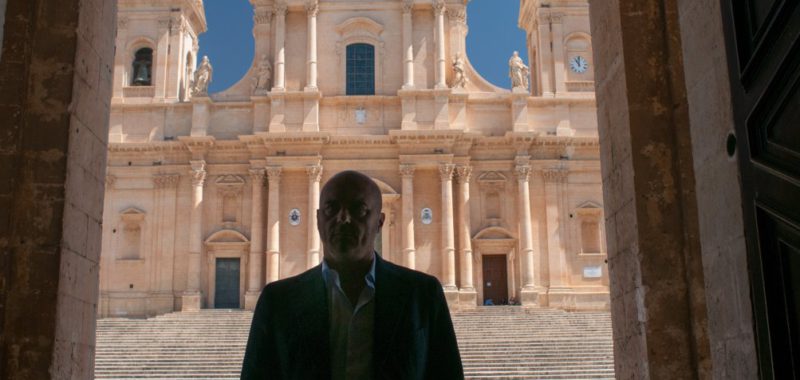
Noto
Sicily has served as the set for the long-running show, and the island is deeply intertwined with the world of Montalbano. Though Vigata does not exist, the places that Montalbano visits throughout the series are very much real: Val di Noto, Ragusa Ibla, Scicli, Punta Secca, Ispica, Modica, Elicona, and Vittoria. Thanks to the show’s place in the hearts of generations of Italian viewers, many of the locations used on the show have now become sought-after tourist destinations, with fans flocking to the Montalbano meccas. These are just a few of the notable destinations where you can walk in the footsteps of Italy’s favorite detective:
Punta Secca (hamlet of Santa Croce Camerina): In this small seaside village, fans can stay at the very site of Montalbano’s famous house by the sea, known as Marinella. Today, it is one of the most-booked B&B’s on the coast. This is also where you’ll find Montalbano’s favorite haunt, Enzo al Mare. The seaside restaurant serves up daily catches, with glittering views. Sadly, having Montalbano as your dining companion is not included.

Enzo A Mare, Punta Secca
Ragusa Ibla (Ragusa’s historic center): Ragusa’s oldest neighborhood stands on a hill in the upper part of the city, with 42 churches and numerous Baroque-style buildings that became the architecture of the city of Vigata. Above and beyond its connection to Montalbano, Ragusa Ibla is a beautiful spot and worth a visit: as many as 14 of the 18 monuments have been declared UNESCO World Heritage Sites.
Scicli: The town, also in the province of Ragusa, transformed its town hall into the Vigata Commissariat for the filming of the show, while the interior of the majestic and aristocratic Palazzo Spadaro served as the Vigata mayor’s office. Finally, the former Chamber of Labor was chosen to set the offices of Montalbano and his deputy, Mimì Augello.
Fans of Montalbano are sure to recognize a familiar aesthetic in the dull yellow of the buildings as they walk around these destinations. Here, inhabitants watch the streets from their windows with a Montalbano-like curiosity, as travelers wander the narrow alleys and town squares of Vigata in search of a new case to solve, a new secret to uncover.

